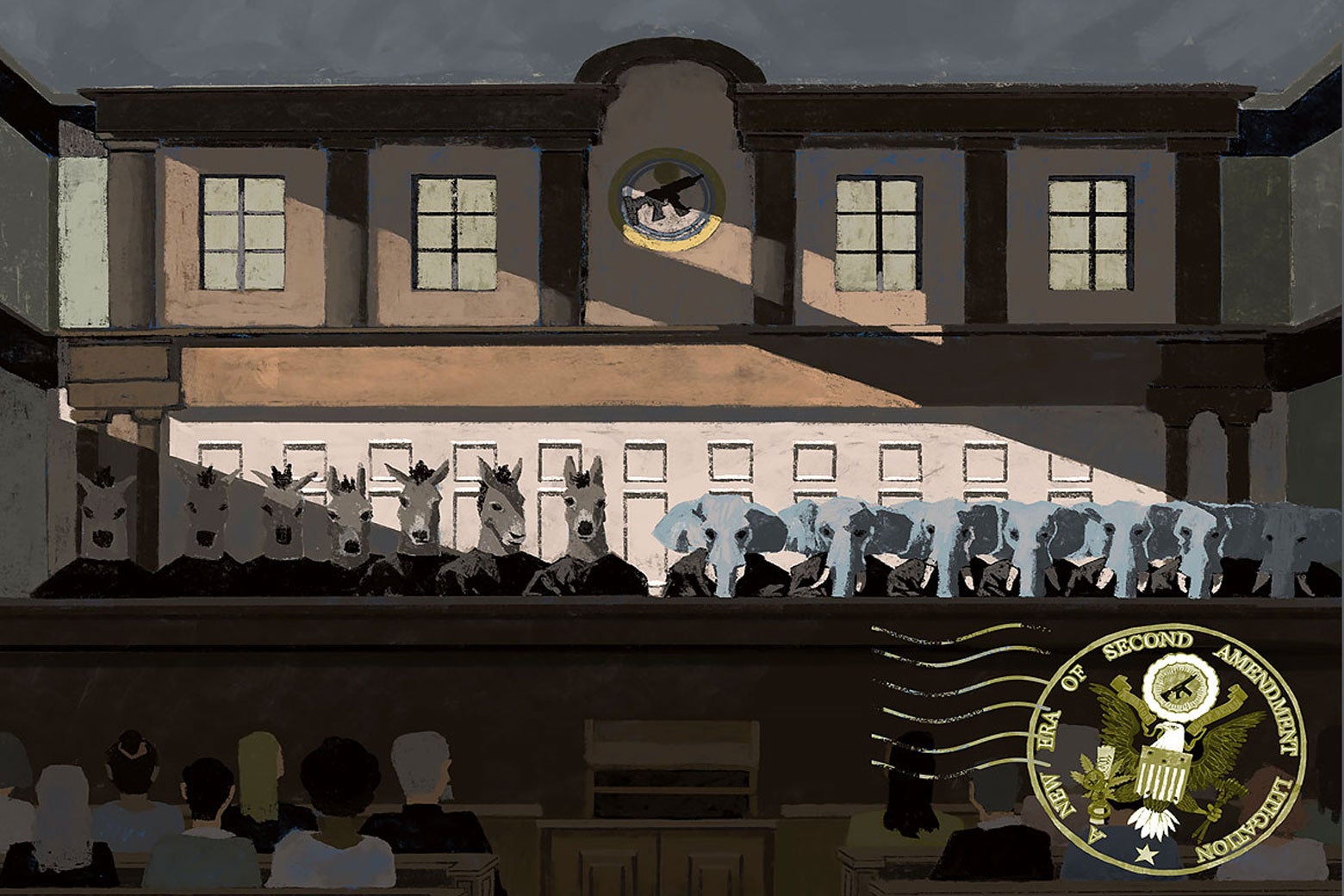Politics
Kavanaugh’s Ruling Aimed at Reducing Judicial Partisanship: How Did It Turn Out?

Brett Kavanaugh’s recent judgments have come under scrutiny, with many arguing he has strayed further from his intentions than ever before. In a significant 2022 ruling related to gun rights, Kavanaugh, along with his fellow conservative justices, introduced a historical test meant to mitigate partisanship in judicial decisions surrounding the Second Amendment. However, recent analyses indicate the opposite has occurred—partisanship appears to have intensified in the judiciary.
To understand the ramifications, we can look back to 2011 when Kavanaugh, then serving as a federal appeals court judge, was a dissenting voice against Washington, D.C.’s assault weapons ban. Kavanaugh posited that any constitutional gun restriction should align closely with the nation’s historical norms regarding firearm regulation. After more than a decade, the Supreme Court, in New York State Rifle & Pistol Association v. Bruen, took this reasoning and expanded it dramatically, reshaping the legal landscape around gun ownership and prompting a cascade of legal challenges.
A recent evaluation by the Trace examined over 1,600 Second Amendment rulings after 2022’s Bruen decision. Rather than achieving the intended reduction of judicial discretion, the ruling has transformed federal courts into political arenas where gun laws are frequently contested along partisan lines. Specifically, Republican-appointed judges have sided with plaintiffs seeking to dismantle various gun restrictions at a rate four times greater than their Democratic counterparts.
The majority of these challenges stem from cases brought forth by gun rights advocates, including the National Rifle Association. While Republican judges have leaned toward the plaintiffs nearly half the time, Democratic judges exhibited a much more cautious approach, often siding with the plaintiffs in just 14% of such cases. This disparity has raised eyebrows, pointing to a growing ideological divide in the application of the same legal standards.
Examining criminal cases influenced by Bruen, some Democratic judges have shown an unexpected willingness to consider the broader implications of gun regulations on marginalized communities. This is in stark contrast to the trend among Republican judges, who displayed a notably lower rate of siding with defendants overturning their charges based on Bruen.
With the impending presidential elections, the issue of judicial nominations looms large. The potential to reshape the judiciary is significant, particularly with the possibility of appointing successors to aging Supreme Court justices, a responsibility that could influence the interpretation of law for years to come.
Moreover, the deepening divide in Second Amendment jurisprudence is evidenced by precedents set by judges like Roger Benitez, a federal judge known for striking down key gun laws in California. His rulings have been frequently challenged and appealed, illustrating the contentious environment that Bruen has fostered.
Critics argue that the ambiguous nature of the Bruen decision allows judges far too much latitude to inject personal ideologies into their rulings. The requirement for judges to evaluate historical precedents creates a subjective landscape where interpretations can vary widely based on the ideologies of the judges involved. This variability has led to frustrations voiced by judges themselves, who contend they are ill-equipped to play the roles of both arbiter and historian.
Experts across the legal spectrum are advocating for reforms to reconsider the Bruen framework, warning that the current trajectory threatens to damage public trust in the judicial system. They caution that allowing judges to dictate outcomes based on historical narratives could lead to a patchwork of inconsistent rulings that undermine the legal integrity of gun laws.
The recent Supreme Court’s decision in United States v. Rahimi, intended to clarify Bruen, has only deepened the confusion. Many legal observers feel this ruling merely perpetuates the ambiguity, ensuring the partisan split in judicial decisions remains a significant concern.
As we navigate this uncertain legal terrain, it seems the path to a more unified judicial approach on gun rights remains elusive. The conversations surrounding judicial independence and adherence to historical precedent are more crucial than ever in an environment increasingly characterized by political alignment. It may be challenging to disentangle the current state of affairs, as many fear the partisan influences on the judiciary are now entrenched.
